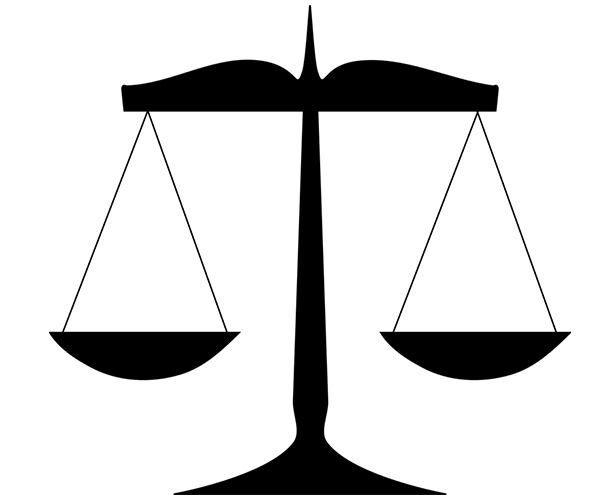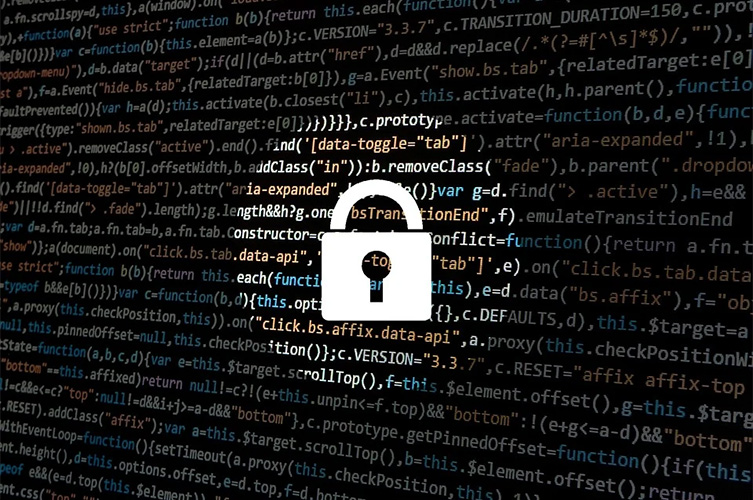Have you ever sent an email, bought something online, shared a thought or a photo on social media, created a user ID on an online service portal, or confirmed a banking transaction? Have you ever done anything on the internet, in a nutshell? Can any of these actions lead back to you? If yes, that forms your digital identity!
In this article, let’s take a deep dive into understanding what a digital ID is. We’ll also take a brief look at its benefits, and ways to protect it.
Understanding Digital Identity
A digital identity is your unique identification among everyone online. It contains certain characteristics and identifiers that are uniquely yours. Let’s understand this with an example.
You have a first name, last name, date of birth, and a job title. Your first and last name alone don’t make you unique (at least for most of us). That’s why you need an additional identifier, like your date of birth. That way, you can clearly establish that an identifier, like an email ID, belongs to you. These identifiers are static: they remain the same throughout your lifetime.
At the same time, some identifiers are dynamic. They can change often, like your job title. These set you apart from others in a specific context. That said, they don’t often identify the real you in a virtual world. Instead, each identifier helps to establish your digital identity. In turn, that digital identity can be a record, allowing others to identify the real you in the digital world.
Using this background information, let us now learn how a digital identity works, why it is important, and more importantly, how you can protect it.
How Does a Digital Identity Work?
Your digital identity includes any attribute that uniquely identifies the real you. Any information about you available on the internet is a part of your digital identity. Each attribute acts like a crumb trail that leads others to you.
We can categorize a digital identity into digital attributes and digital activities. An attribute is something that describes you, like your email ID, while an activity is some action you did online, like a banking transaction. The below table lists the attributes and activities.
| Digital Attributes | Digital Activities |
| Payments you make | |
| First and last name | A purchase |
| Government IDs, like your driver’s license | Signed petitions |
| Social Security Numbers | Social media posts, images, conversations, etc |
| Login credentials, like usernames | Online reviews |
| Online bank account | Geolocation use |
| Biometrics | App downloads |
| Medical history | Domain names |
| Date of birth | Comments on social media |
Your digital identity combines both these digital attributes and activities.

What purpose does it serve? Many online services use this information to prove it’s you and give you access to services. Some services even require that you input this information to allow you to complete transactions. That said, malicious parties lurk around the internet to gather all this data on you to attack your machine and use it to launch other attacks.
Let’s first consider a digital identity’s benefits.
Why Is Digital Identity Important?
A digital identity offers many benefits to users. It offers easy and selective access to information since you don’t have to store physical files anymore. Instead, you store them virtually and prevent anyone from accessing it with a password. You can share information and express your opinions for anyone or a specific group to see. It also helps bring products and services to a wider audience.
That said, a digital identity has unlimited potential. Here’s a look at some of the most important benefits.
Access to Services
According to the World Bank, one billion people in the world don’t have an identity. One in every two women also doesn’t have an ID. That means they can’t access critical services related to economic empowerment, education, healthcare, and more. That results in a poor quality of life for many people.
A digital identity can allow them to access these critical services and improve their overall health and quality of life. That’s why, about 161 countries have already established the required digital ID technology to generate unique IDs for their people. Through this digital ID, everyone can access government welfare programs, insurance, and more.
Financial Empowerment
Did you know that more than 1.7 billion people don’t have a bank account? That means they have zero access to funds through a formal financial channel. What’s more, they’re unable to leverage government schemes and incentives that’ll empower them financially.
A digital identity can change this situation. It’ll bring these people into a formal banking channel. In turn, that’ll open up opportunities for financial assistance and empowerment.
Equality
Complex socio-economic structures create many disparities in our world. We’re not claiming that a digital identity can solve them all, but it’s a positive step forward toward equality. That’s because it creates a digital presence for every individual. That enables them to access digital services to improve their lives.

These benefits can truly be life-changing for millions of people around the world. Yet, it’s not all sunshine and roses. Digital IDs also have many downsides. Let’s take a look at them to understand how we can protect ourselves from the digital ID drawbacks.
When Things Cross the Line
While we’re all eager to receive the digital identities’ benefits, we can’t deny they have drawbacks. Let’s take a look at two of the most prominent downsides: privacy and security.
Privacy
Digital identities give you little privacy. Why? Because everyone can know you, your preferences, and possibly even things that happen in your life.
Marketing, advertising, and online service companies can all access your digital identity. They’ll use it to create a digital profile of you based on all your online activities. That way, they can promote the products and services that appeal to you. In turn, you’re more likely to buy those products and services. That results in more profit for these online companies.
Many people believe that’s a surveillance mechanism that invades their privacy. The debate around the targeted advertising topic is beyond this article’s scope, though. That said, note that third parties can use this data against you, like discrimination for a job application or make a prejudiced opinion based on your actions.
Security
People with malicious intent can steal your digital identity. They can use it to access the services and products you’re entitled to. For example, a cybercriminal can steal your social security number and apply for a personal loan online. The institution processing the loan will think you’re the one applying for it. They’ll approve the cybercriminal’s request based on your credit score and other financial abilities. In reality, though, someone else would receive the money and you’ll be stuck paying for it.
What’s more, some middlemen attackers hack millions of records containing digital IDs. Then, they sell them on the dark web for money. The person who bought your digital ID can then impersonate you, transfer your money without your knowledge, and perform other unscrupulous activities.
To give you an idea, here are some statistics that show how enormous this problem is:
- According to Risk Based Security, data breaches revealed 36 billion records or digital identities in the first half of 2020 alone.
- Review 42 expects cybercriminals will steal 33 billion records in 2023.
- The same reports showed Americans lose an average $15 billion annually due to identity thefts.
To avoid becoming another number in the above statistics, you need to make active efforts to protect your digital identity. Let’s take a look at some of the best ways to guard your privacy.
How to Protect Your Digital Identity?
Here are 4 tips to protect your digital ID from malicious imposters who are looking to use your information for financial gain.

1. Use Strong Passwords
Protect your passwords and make sure they aren’t easy to guess. Remember, these passwords are your first defense line against any cyber attack or unauthorized access. That’s why having a hard-to-guess password will better protect your digital ID.
Pro Tips
- Never give your username and password to anyone who asks for it.
- Use unique passwords for your important accounts.
- Use a random combination of upper and lowercase letters, numbers, and symbols.
2. Avoid Phishing Emails
Cybercriminals send phishing emails to entice you to share your digital identity with them. Often, they’ll sound legitimate and may even offer you a reward for clicking on a link. Unfortunately, the links will often be malicious. Learn to identify these emails and make sure you never click the links in these emails.
Pro Tips
- Don’t click on any suspicious links, especially from text messages and emails.
- Look out for emails that promise money and rewards in return for personal information, like bank account numbers.
- Use email clients with advanced spam filters.
3. Review your Settings
Often, apps require permissions to operate on your device. Some apps may require unnecessary permissions, though. That may leave you vulnerable to security breaches. Websites may also use cookies to track you. To reduce these risks, review your app permissions and cookie settings. You also need to uninstall or block any apps or websites that seem suspicious or lack transparency in their requests.
Pro Tips
- Use settings that limit what organizations can do with your information.
- Review these settings often.
- Use your browser’s incognito mode.
4. Stay Up to Date on Security Measures
You can also follow the best security practices, according to industry experts. Just be on the lookout for some tips and tricks and make sure to follow them.
Pro Tips
- Consider using a secure connection, like a VPN.
- Be aware of your rights and responsibilities under your country’s laws.
- Read articles about protecting your digital ID and remain up-to-date on the latest informtion.
These strategies combined can protect your digital identity, so you can make the most of it without fearing its downsides.
The Bottom Line
Digital identities are the future. It won’t be long before every individual on the planet has one or more digital IDs mapped to the real person to empower each person to access the services they want online.
That said, digital identities have a few downsides, just like any other technology. The two most prominent pitfalls are privacy and security. The good news is many emerging technologies, like blockchain and verifiable credentials, go a long way in ensuring your data’s privacy and security. You can also attempt to close the loop yourself. Secure your passwords, avoid suspicious links, and use secure connections. It’ll be interesting to follow this field’s evolution, so monitor the latest updates in this field.
FAQs
What’s a good example of digital identity?
A digital identity can be an attribute that describes you, like your email ID, login credentials, etc.. It could also be digital activities, like online purchases and social media posts. As you can see, a digital identity (attribute or activity) acts as a bridge between your virtual username and the real you.
Is my digital identity safe?
Many online service companies use encryption and secure storage to keep your information safe. Newer technologies, like the blockchain and verifiable credentials, also contribute to your digital identity’s privacy and security. That said, you need to follow some best practices, like using strong passwords, reviewing the security settings on your apps, and more.
How is my digital identity created?
When you try to use or access an online service, you often have to provide personal information. Service providers ask for things like your name, date of birth, email ID, etc. This information you share creates your digital identity. Your online activities, like online photo uploads or online purchases, also contribute to your digital identity’s creation.
Can others use my digital identity?
Unfortunately, yes! Many existing technologies contribute to the widespread use of digital identity. That’s why digital identity has many privacy and security concerns surrounding it. That said, many expect the newer technologies, like blockchain and verifiable credentials, to make your digital identity more secure and private going forward. Until then, you’ll have to take additional steps to protect your identity. You can use strong passwords and review your security settings. You also can download antivirus software on your machine or follow more precautions to protect your digital identity.
Resources
Safeguarding your Digital Identities
Read through this article to understand what steps you can take to protect your digital identity.
Digital Identity Initiatives from Microsoft
Check some digital identity initiatives from Microsoft based on blockchain.
Controlling Digital Footprints
Curious about what you can do to stay on top of your digital footprint? This article is a good starting point.
All About Identity-as-a-Service (IDaaS)
Can IDaaS protect your digital identity? Read on to know all about it.



